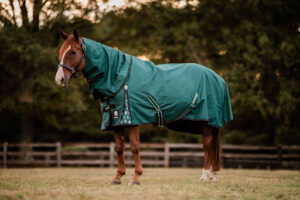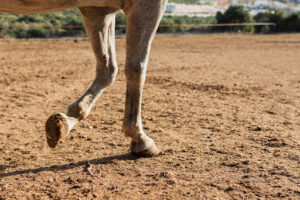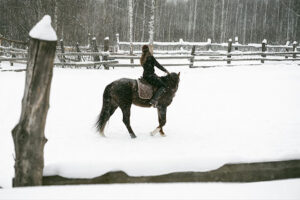What You Need to Know About Winter Turnout Blankets
Horses that have access to fresh air and wide-open pastures have a big advantage over horses that don’t, and as a general rule when it comes to turnout time: the more, the better. Some riders only bring their horses into the barn to feed, groom, and ride them—and maybe not even then! When the weather gets more […]

Horses that have access to fresh air and wide-open pastures have a big advantage over horses that don’t, and as a general rule when it comes to turnout time: the more, the better. Some riders only bring their horses into the barn to feed, groom, and ride them—and maybe not even then!
When the weather gets more extreme, though, it may be necessary to add a blanket in order to keep your horse happy outside—whether it’s pouring rain or the temperature drops below freezing, it’s important that you make sure your horse isn’t suffering.
How and when to blanket your horse (or if you shouldn’t at all) is a much-debated subject, and there are many good points that can be made for all sides. What it comes down to is what your horse needs in order to be comfortable. A short-haired or clipped horse who isn’t used to the cold will need a blanket long before an unclipped Icelandic horse.
All disclaimers aside, read on to find out when you should use the different kinds of turnout blankets.
First, a Bit About Turnouts
A turnout blanket, as the name suggests, is one that is designed to be used when a horse is turned out into a paddock or pasture. He may be with other horses or alone but he’s able to roam around and act as horses do: walk, run, roll around and play.
Which is why it’s important that turnout blankets are more durable than stable blankets or sheets, which are typically worn in a stall where he won’t be moving around so much.
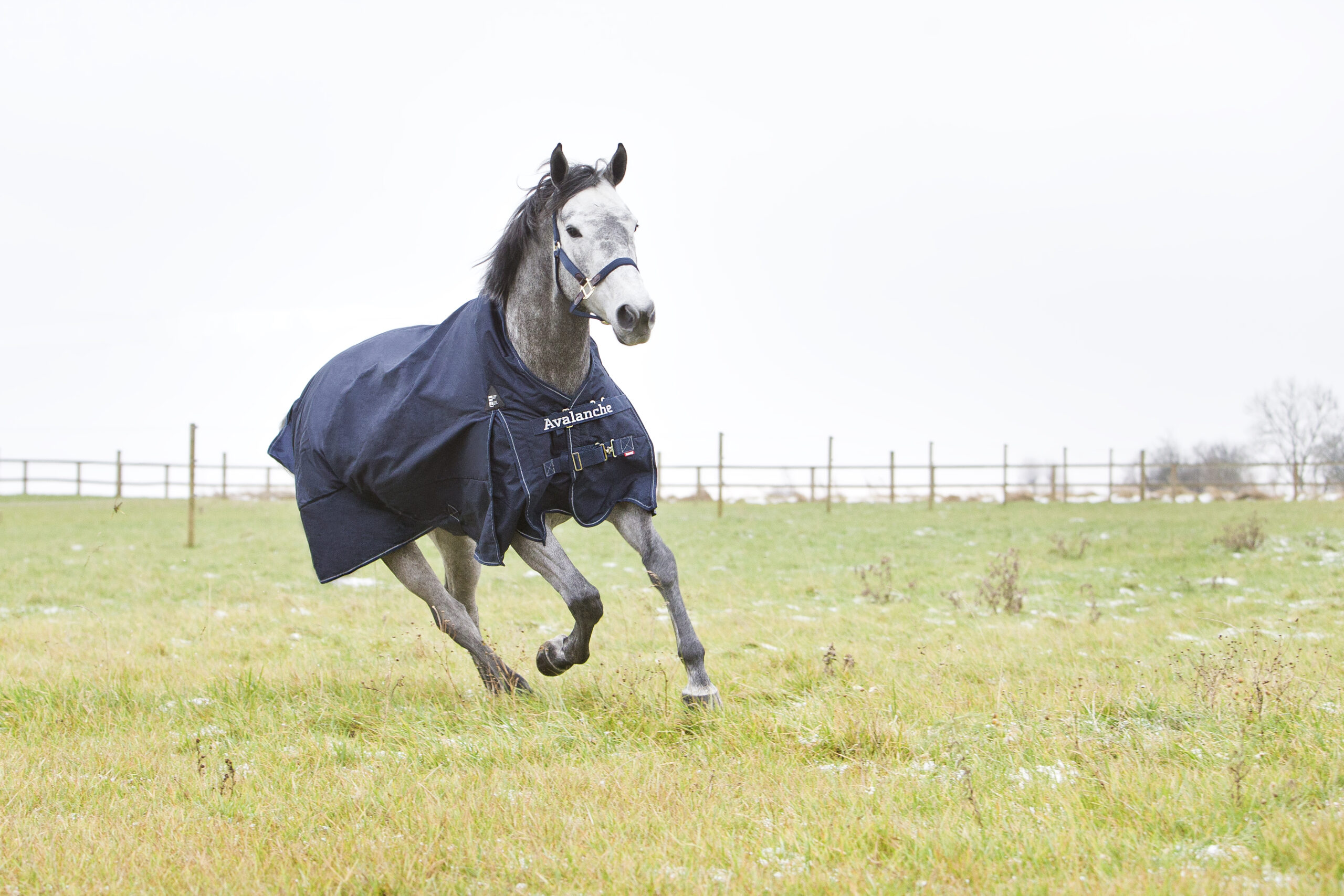
Turnout blankets—at least the ones from Horze—are designed with plenty of surcingles and leg straps, along with tail flaps and a front closure so that horses can act like horses without you having to buy another blanket every week. This is great for riders who want to let their horses roam free even when the weather gets colder.
1200 denier ripstop material adds another degree of protection as it’s stronger than the 600 denier material used in cheaper turnout or stable blankets, so horses that bite and kick or otherwise act up won’t tear their buddies’ turnout blankets as easily.
Good turnout blankets are also breathable, using layers of fabric to trap and warm air against your horse’s body even when it’s raining outside.
Which Turnout Blanket Should I Use?
Lightweight Turnout Blankets
When the temperature starts to drop in mid- to late-fall, lightweight turnouts are great as transition blankets—shorter days and cooler temperatures mean bare coats can be insufficient, especially if there’s dew or frost in the mornings.
Lightweight blankets can act as windbreakers and insulators, preventing dew or a cold breeze from sneaking into your horse’s
coat and chilling him down. These blankets don’t offer much insulation, just acting as a barrier between your horse and the
elements. Others may offer some insulation (called fill), but not more than 100–150 grams.
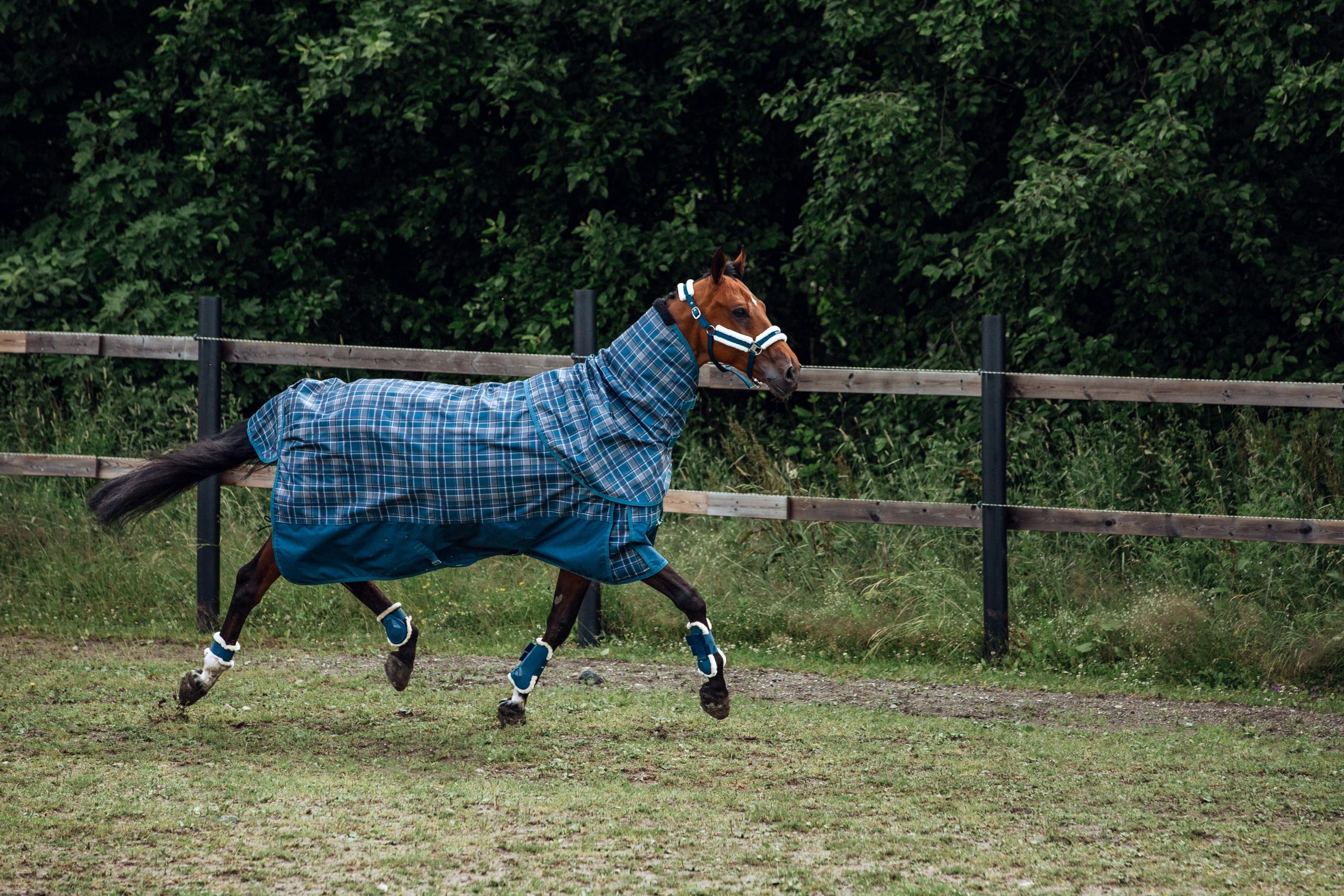
Medium Weight Turnout Blankets
As winter sets in and temperatures drop further, lightweight blankets may not offer enough protection or warmth. This is where medium weight (also known as midweight) blankets come in—with more insulation (usually 200-250 grams) and greater
durability. They are often a bit longer or sturdier with stronger buckles and more room for movement and horseplay. This makes them great for an average winter day—you can let your horses can run and play around in the cold or the snow without being afraid of them getting a chill.
If you’re not sure what blanket weight you should get for your horse, then medium weight is a good option. Most horses—except for the ones with the thickest or the thinnest coats—get the most benefit from a midweight blanket throughout the winter season. These durable blankets withstand everything but the coldest winter days and nights.
Heavyweight Turnout Blankets
When the temperatures get really cold (usually around 20–30°F is a good indicator), your horse—especially if he’s full body clipped—will need help keeping his body temperature up. It could even be dangerous for him to be outside without some help. It’s at this point you need a heavyweight blanket with a 300–400+ gram fill. These are the warmest ones you can find and will ensure that your horse can stay outside even in the bitter cold. Some even have detachable or fixed hoods for an added protective feature.
Remember: Safety First
It’s important to remember that even with a turnout blanket on, your horse can be injured when he’s out in the field—and the injury may not be visible if it’s under his blanket.
A perfect time to check your horse is when he comes in for partial or full shelter at the stable and changes into a stable blanket. As you take off his turnout, inspect his coat and body for injury, weight gain or weight loss, chafing or other conditions. This is also a good time to give him a wash or a scrub, and to groom him before you turn him back out.
Conclusion
Like we mentioned at the start, there are many different opinions about blanketing your horse during the winter—some are totally against it, others are for it, and many are in between. What’s really important is making sure that your horse or horses are comfortable all season long if they’ll be turned out. Factors like age, wellbeing, breed, whether his coat is clipped or not and where you live all contribute to what he needs; so the most important thing is that you pay attention to him as temperatures drop and take measures as needed.
With a watchful eye and the right equipment, you’ll keep your equine friend warm, safe, and dry all season long.
What are your winter blanketing tips? Let us know in the comments below!





